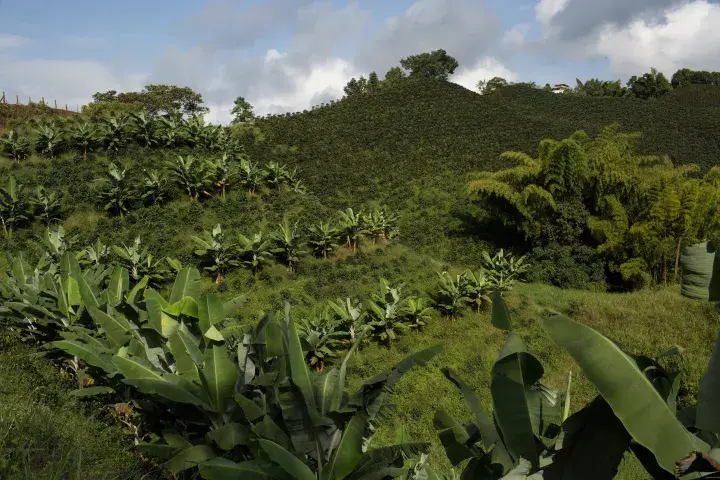The concept of ‘Living Income’ has grown in popularity as a way to improve livelihoods for smallholders. It goes a step beyond traditional notions of poverty alleviation: recognising that a household income can come from multiple sources and emphasising decent living and resilience over basic subsidence and survival.
Where does gender come into this conversation?
There are gender specific cultural and institutional barriers that only affect the income of female smallholder farmers. For example, in Ghana, cocoa is considered a ‘male’ crop. Men dominate and control the resources within the sector, even though women make up 40 percent of the agricultural sector’s labour force.
Women’s access to land, inputs, labour and income is largely constrained. Even if a woman has the means to buy a piece of land, they still need a male family member to acquire it. Culturally, the burden of care work also falls on women, affecting their ability to engage in economically empowering ventures. This high dependence on male family members means women’s income is 25-30 percent less at household level compared to men.
Initiatives need to address the gender dimensions of the root causes. If the barriers to a living income for women are systemic, any approaches to tackle them must go beyond simply alleviating the symptoms of poverty and inequality.
Gender transformative approaches
By applying a gender lens, gender transformative approaches can bring about a formal shift in institutional policies and practices, as well as the informal norms, attitudes and power dynamics that sustain gendered discrimination.
There is a strong argument for the use of gender transformative approaches when considering living income. But how do we embed them in practice?
Critical reflection is key. The first step to tackling gendered discrimination is identifying root causes and challenging the power structures at play. Alongside this, meaningful participation and engagement from women and non-binary people is necessary to ensure resources, time and training are invested in the most useful way and capacity is built.
Using metrics and tracking data is also important:
- Benchmarking is needed to understand the gender dimensions of the living income gap
- Gender analysis can identify gaps in access to services and resources
- Rapid assessment tools can be used to measure women’s labour
- Monitoring and communication of progress made maintains transparency.
The challenges
Methods to embed gender transformative approaches come with their own challenges. Limited resources and a demand for quick wins can lead to a lack of follow through in an area that needs consistent investment to see real progress. Companies and stakeholders need to engage in the business case for consistent financing. Greater focused collaboration between public and private actors would improve investment and encourage long-term initiatives.
There is also a need for better data collection. Currently, the collection of data at household level is not gender segregated. Alongside household cash controlled by men, care work not accounted for and women often working on crops for consumption, it is hard to get accurate data on women’s incomes.
Finally, tailoring approaches to local contexts with cultural sensitivity is difficult, as the barriers and methods for scaling solutions will differ from place to place.
Sustainability systems are important market-based tools to further sustainability goals and are increasingly used by business across many sectors. One of the advantages of sustainability systems is the structures they have in place, such as assurance and M&E, which can be used to gain insight on gender risks and issues within certified entities and supply chains. A briefing paper by ISEAL highlights research into the post pandemic gendered impacts of key sectors of interest and explores solutions and lessons learned to support adaptation and response by schemes.
Mitigating challenges
There are examples of gender transformative approaches mitigating challenges. The Gender Empowerment Platform in Kenya focuses on improving financial literacy for the whole household. Providing a case for decision-making to be spread more equally at a household level resulted in a 20 percent improvement of participants in favour of having a joint decision-making process.
FMS Farms in Nigeria follows a block farming model. Farms are segregated and leased to female farmers, allowing them access to land and giving them more control over production, circumventing outdated land laws on women’s ownership rights.
First steps
Sectors and companies interested in pioneering initiatives – such as those run by Oxfam, IDH, and the Sustainable Food Lab – can take steps to adopt gender transformative approaches to support farmers. Resources, such as the Oxfam Gender Transformative Tracker Tool, provide guidance and help actors to set targets and timelines so appropriate data collection can begin.
The key to organisations beginning to incorporate gender transformative approaches is to include women in the conversation from the start, engage men and boys as part of the solution, and listen to the needs of communities.
The Living Income Community of Practice is an open multi-stakeholder partnership that aims to generate guidance and support on measuring and reporting information related to existing and living incomes and the gap between them. It also acts as a shared learning space for organisations to identify and discuss strategies that aim to close income gaps.
Listen back to a webinar on living income and gender, with speakers from IDH, Oxfam and the Sustainable Food Lab.



